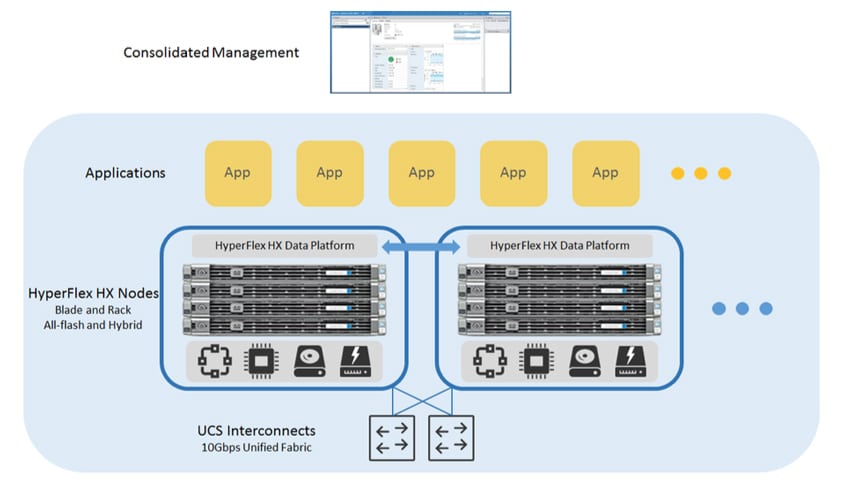Today Cisco announced that its HyperFlex Systems was able to hit unmatched application performance for a hyperconverged infrastructure (HCI) in an ESG Lab validation report, against the three other HCIs it was tested against anyway. Cisco is announcing new capabilities for its HyperFlex Systems portfolio. And they are reporting that they have added 1,100 HyperFlex customers in less than a year.

Just last month, Cisco released HyperFlex 2.0. As we said at the time, HyperFlex is the combination of Cisco UCS and the Cisco HyperFlex HX Data Platform. HyperFlex is designed to bring simplicity while increasing operational efficiency and adaptability. Version 2.0 adds in new innovations in compute, storage, and networking. We also pointed out that HyperFlex was entering a crowded HCI market with no clear differentiator. Cisco has responded by pointing out the flaws in first-generation HCI (running on conventional servers and lack cluster networking integration, which limits application performance). Cisco also points out that the early HCI offerings are limited in their use case.
To back this up, Cisco is pointing to an ESG Lab validation report that compares HyperFlex to other HCI solutions (the number was limited to just a few and they weren’t named). In hybrid testing, the report showed that HyperFlex could support twice as many VMs at 5ms write latency (140 VMs compared to the next closest HCI with 70 VMs) and nearly three times the IOPS in 4KB I/O 70% read 100% random (HyperFlex having nearly 120K IOPS versus the next closest at 45K IOPS). In all-flash SQL Server testing, HyperFlex was able to hit 400K IOPS compared to the other HCI’s 110K IOPS. This one report does show that HyperFlex is purpose-built HCI solution that can deliver better performance.
As was stated last month, HyperFlex has added several new enchantments to further bring high-performance. These include:
- High-capacity all-flash nodes and support for 40 Gbps UCS fabric networking to expand customer options for extreme application performance.
- New intuitive platform management with HyperFlex Connect, featuring dynamic system analytics and a standalone HTML5 interface for the management and orchestration of HyperFlex clusters from any device.
- Enterprise-grade data management, protection and security for the most sensitive workloads, with the introduction of a native replication feature to protect applications and new data-at-rest security options using self-encrypting drives.
- Hybrid cloud mobility with the integration of Cisco ONE Enterprise Cloud Suite (ECS) CloudCenter for private and public cloud elasticity.
- Self-service catalogs with metering and workload automation through the recent release of ECS UCS Director integrations that provide customers with IaaS orchestration for private and hybrid services.
Cisco announced today that in nine months (when they began shipping HyperFlex) they were able to add 1,100 HyperFlex customers. Not as impressive as VMware’s vSAN gaining 7,000, but it is a big step in the right direction. HyperFlex is an integral part of Cisco’s ASAP data center strategy (Analyze, Simplify, Automate, and Protect). While today’s announcement doesn’t exactly clear up where Cisco sees itself in the HCI market, it does give us a few hints such as key for high-performance applications and moving beyond a few highly specialized use cases to address more needs in the modern data center.




 Amazon
Amazon